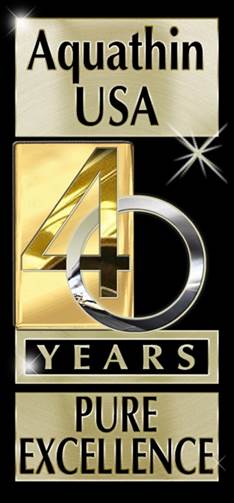Chlorination byproduct linked to birth defects in Texas.
Chlorination byproduct in South Texas water linked to birth defects
U.S. Water News Online
SAN ANTONIO -- High levels of a chlorination byproduct linked to cancer, miscarriages, and neural tube defects has been
discovered in at least 12 Rio Grande Valley Texas water systems, according to a report in the San Antonio Express - News
Last month, Alamo residents were sent letters from the city's water system alerting them that the city's drinking water
contained amounts of trihalomethanes that exceeded federal regulations, the newspaper reported.
Trihalomethanes are chemicals that are produced in the water chlorination process.
The letters said studies have shown the chemicals may cause miscarriages in the first trimester of pregnancy.
It also noted that the U.S. Environmental Protection Agency warns the chemicals may cause liver, kidney, and central nervous
system problems, as well as cancer. Three studies have linked the chemicals to neural tube defects.
The EPA proposed regulating trihalomethanes in 1977 and, starting in January, will require large water systems to keep their
levels to a maximum of 80 parts per billion.
Smaller water systems that serve fewer than 10,000 customers will have until January 2004 to comply.
Texas' standard is 100 parts per billion, but the rule, enforced by Texas Natural Resource Conservation Commission,
is limited to large water systems. Utilities serving small communities aren't regulated.
"Out of proactiveness, (we) have been getting some data from all of the systems,'' said TNRCC spokeswoman Jean Pieper Voshell.
Voshell said the agency has begun testing small systems to help them prepare for compliance with federal regulations.
At least 10 systems in the Rio Grande Valley haven't been tested, she said.
In La Feria, where water supplies exceed the state's maximum level for trihalomethanes, officials plan to reduce levels with
ammonia or chlorine dioxide, said City Manager Sunny Philip.
The city plans to improve the water before a 2004 federal deadline, he said.
"If it was an immediate danger or something, (the EPA) would have issued a warning right away,'' Philip said.
"Our water is safe to drink, and we've never had any violations of water guidelines.''
Activists, who blame environmental causes for the high level of birth defects on the U.S.-Mexico border,
said they have suspected trihalomethanes for years.
In 1990 and 1991, 33 Cameron County children were born with neural tube defects, three times the national average.
Also, the rate of neural tube defects inexplicably increased in 1998 after steadily dropping for six years.
"This doesn't surprise me at all,'' said Dr. Carmen Rocco, a Brownsville pediatrician. "These trihalomethanes go back to
the issue about solvents, and we know that that's a big exposure for this community.''
Frank Bove, the scientist who conducted a New Jersey study published in 1995 linking trihalomethanes to neural tube defects,
said there may be evidence to suggest the chemicals may be involved in Valley birth defects.
"I think the data is strong enough,'' said Bove, a senior epidemiologist with the Agency for Toxic Substances and Disease Registry.
"It's strong enough to say that we suspect it, and that should be a strong reason for it to be looked into in Texas.''
FOR THE BEST TASTE IN LIFE
Think Aquathin...AquathinK!
Edited from Tech Bank 9/21/01


